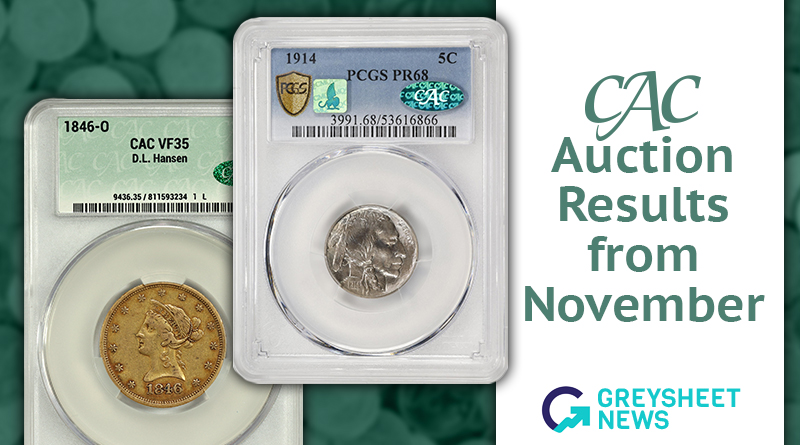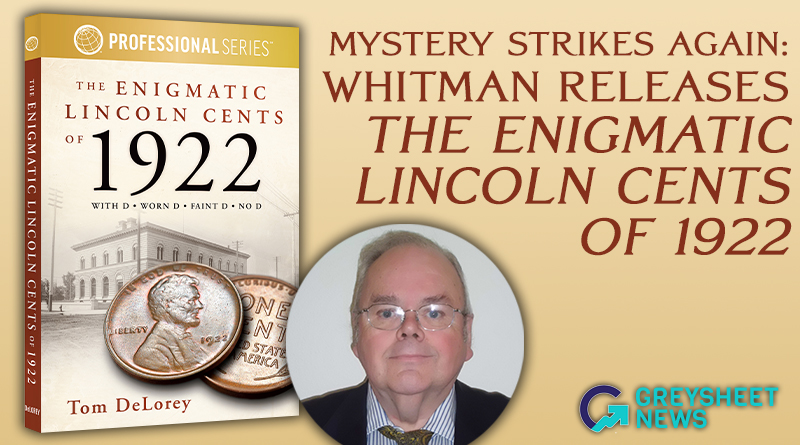- U.S. Coins /
- Dimes /
- Mercury Dimes (1916–1945) /
- 1916-D 10c MS
1916-D 10c MS
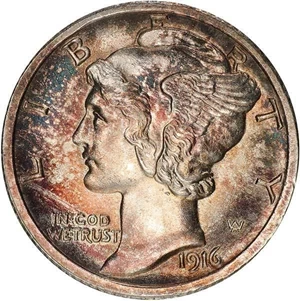
10C 1916-D MERCURY. PCGS MS64 CAC
Source: Legend Auctions
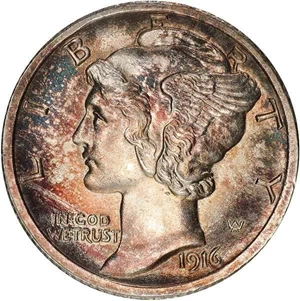
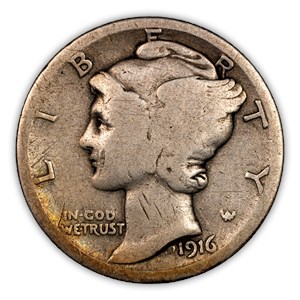
1916-D 10c CAC AG DETAILS
Source: CAC Grading
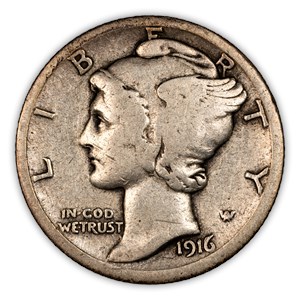
1916-D 10c CAC VG10
Source: CAC Grading

1916-D 10c CAC G4
Source: CAC Grading
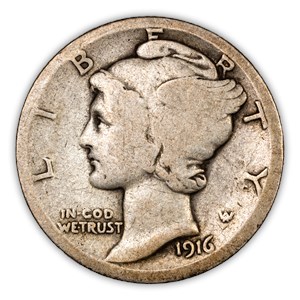
1916-D 10c CAC G4
Source: CAC Grading
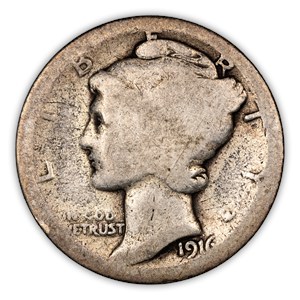
1916-D 10c CAC AG3
Source: CAC Grading

1916-D 10c CAC AG DETAILS
Source: CAC Grading

1916-D 10c CAC VG8
Source: CAC Grading

1916-D 10c CAC G6
Source: CAC Grading
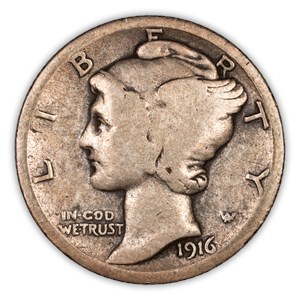
1916-D 10c CAC G6
Source: CAC Grading

1916-D 10c CAC AU55
Source: CAC Grading
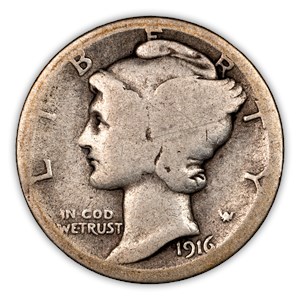
1916-D 10c CAC AG3
Source: CAC Grading
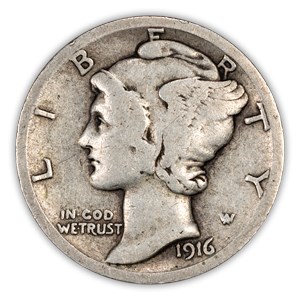
1916-D 10c CAC G4
Source: CAC Grading
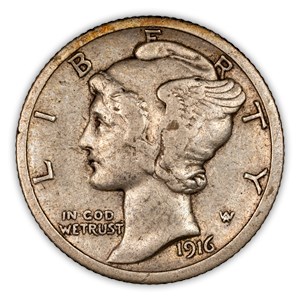
1916-D 10c CAC XF40
Source: CAC Grading
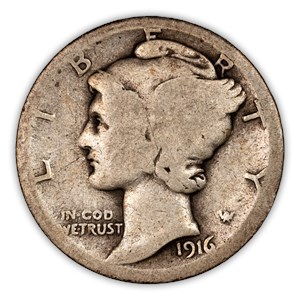
1916-D 10c CAC AG3
Source: CAC Grading

1916-D 10c CAC FR2
Source: CAC Grading
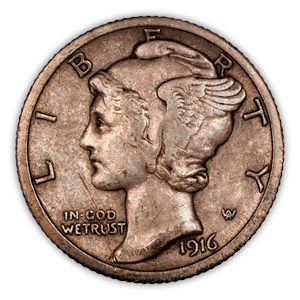
1916-D 10c CAC XF DETAILS
Source: CAC Grading
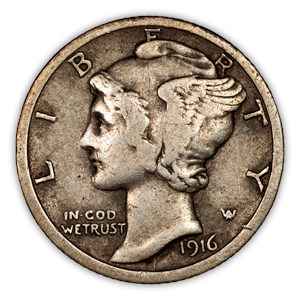
1916-D 10c CAC VF30
Source: CAC Grading
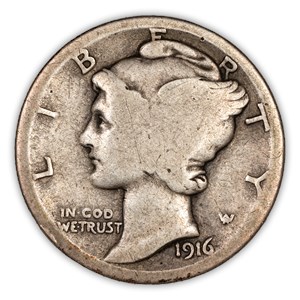
1916-D 10c CAC AG3
Source: CAC Grading




















Greysheet Catalog Details (GSID: 4523)
The big key-date for the Mercury dime series is the 1916-D, a piece many numismatic experts regard as one of the most important regular-issue rarities of the 20th century. In terms of popularity and numismatic significance, the 1916-D Mercury dime is on par with the 1909-S VDB and 1914-D Lincoln cents, 1916 Standing Liberty quarter, or 1932-D and 1932-S Washington quarter.
This coin survives in far smaller numbers today than some people would probably realize. Perhaps only 10,000 exist, which is but a fraction of the 264,000 minted. It’s rare in all grades and is most commonly encountered in the circulated range of Good to Very Fine, with even these pieces easily taking a four-figure price. Mint State examples, and especially those in the Gem grades, are particularly rare. At the very least, most 1916-D Mercury dimes are well struck, so when uncirculated specimens do cross the path, it shouldn’t be very difficult to find nice examples among those.
The 1916-D Mercury dime is one of the most commonly faked 20th-century coins, and both wholesale and retail buyers should be cautious about buying raw specimens. Many fakes consist of real 1916 Philadelphia Mercury dimes with an added D mintmark. Of course, a great many others are cast counterfeits or pieces struck from crudely made and nefarious route when dealing with 1916-D Mercury dimes of any grade.
Obverse: Winged Liberty, or Mercury (the Roman god of commerce), is depicted facing left with LIBERTY spelled around the periphery. IN GOD WE TRUST appears left of the neck and the date is positioned just below the bust around 5 o'clock. The designer's initials "AW" appear to the right of the neck.
Reverse: A large torch is centered vertically adorned with an axe head and olive branches. UNITED STATES OF AMERICAN * ONE DIME * is spelled out around the periphery. Mint mark, if any, appears near the bottom rim left of the torch.
Catalog Detail
Greysheet & CPG® PRICE GUIDE
From the Greysheet Marketplace
Buy Now: $12,025.00
Buy Now: $4,925.63
Buy Now: $832.50
Buy Now: $23.00
Buy Now: $4,208.75
Buy Now: $323.75
Buy Now: $208.13
Buy Now: $1,281.13
Buy Now: $19,656.25
Buy Now: $832.50
Related Stories (powered by Greysheet News)
View all newsAbout CDN Prices
All CDN prices are based on proprietary market knowledge and technology developed by CDN Publishing, LLC.
CPG® prices represent retail levels. Collectors should refer to CPG values as a starting place for their negotiations, or auction bid reference.
Greysheet/Greensheet prices are wholesale market levels for collectible coins/paper money intended to indicate what a dealer, or wholesale, buyer would pay for the described item in the specified grade. Greysheet/Greensheet represent "sight-seen" values based on a buyer's in-hand review. The actual value can be more or less than this depending on factors including eye appeal and market timing.
Bluesheet (NGC & PCGS) prices represent the highest sight-unseen offers to buy on dealer networks like CDN Exchange. In many cases, there are no active sight-unseen buy offers, so CDN looks to the recent lowest market values for such an item. For this reason, Bluesheet values typically represent the floor of the market for the specified item. CDN only tracks Bluesheet on certain items.
CAC prices are for U.S. coins that meet the standards of the Certified Acceptance Corporation. You can learn more about CAC on their web site.
Price movement is indicated for price changes in the last 30 days.
The prices listed in our database are intended to be used as an indication only. Users are strongly encouraged to seek multiple sources of pricing before making a final determination of value. CDN Publishing is not responsible for typographical or database-related errors. Your use of this site indicates full acceptance of these terms.


 Dealers Only
Dealers Only















